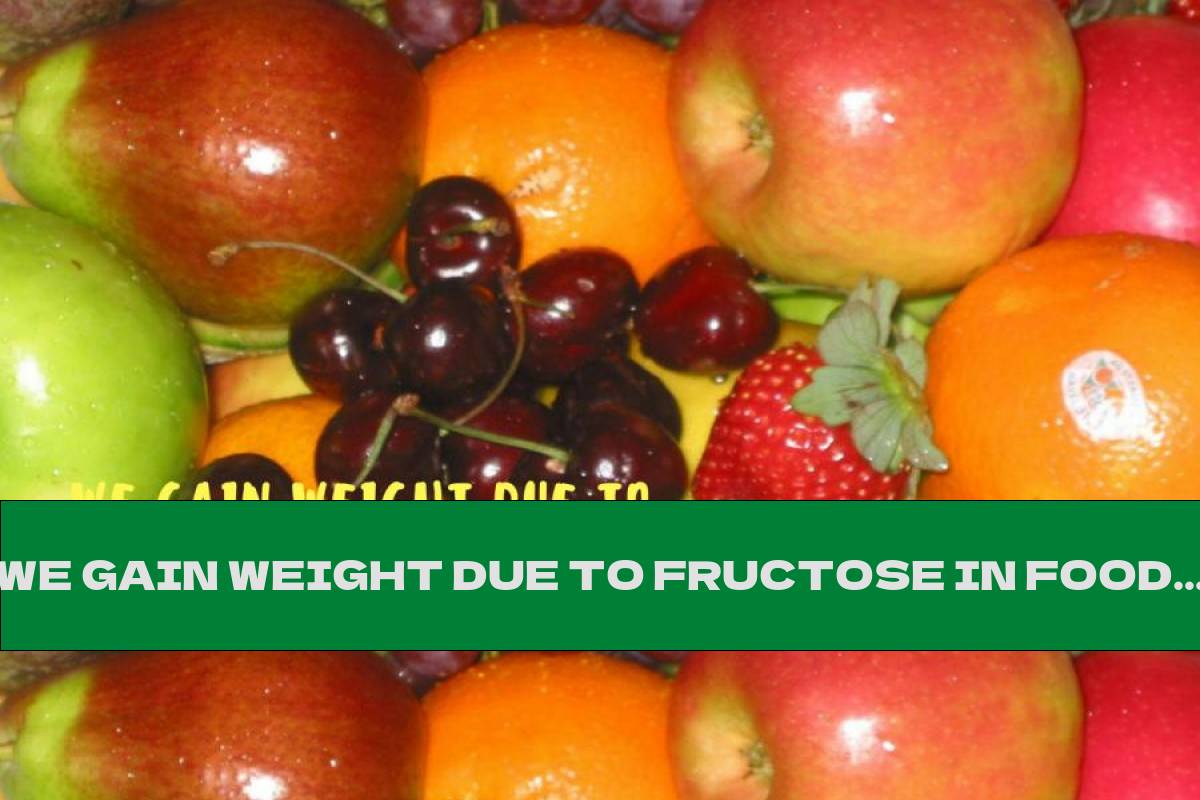WE GAIN WEIGHT DUE TO FRUCTOSE IN FOODS
 Author: Nia Rouseberg
Time for reading: ~3
minutes
Last Updated:
August 08, 2022
Author: Nia Rouseberg
Time for reading: ~3
minutes
Last Updated:
August 08, 2022

CHAPTERS (Table Of Contents)
In this article we are going to talk about the content of fructose in many foods and how it affects the weight. We are also going to discuss the role of fat gaining in the life of every diabetic.
Fructose is a monosaccharide contained in most fruits, vegetables and honey. It is often added to various beverages - for example juices and soda. As you can probably guess, fructose is the so-called "beneficial sugar" for the body, provided it is naturally harvested without being processed.
By itself, fructose is a carbohydrate
The exchange of fructose in the body is a long process.
We can intake fructose in the form of white sugar as monosaccharide by consumption of fruits and honey. Once taken, it is absorbed into the small intestine and transported to the liver where it is digested.
Here is which foods are sources of fructose:
(1) Fruits and vegetables.
Although fruit consumption is considered healthy and definitely helps you lose weight because of its high fructose content, in some cases, excessive fruit consumption could cause gaining effect. Although here we are speaking about the useful sugar content, an excessive dose of fructose from fruits can lead to disbalance.
- Fruits with high fructose content are: grapes, bananas, apples, blueberries, plums, pineapples, pears, apricots, peaches, oranges, grapefruits, coconuts, watermelons
- Vegetables with high fructose content are: beet, cane, onions, sweet potatoes, carrots, corn, tomatoes, broccoli, cauliflower
(2) Honey
Honey is used as a natural sweetener. White sugar consists of 100% sucrose, while honey contains about 75% sucrose, only 50% of which are fructose. Honey therefore has fewer calories per 100 grams - about 330 calories. To compare, white sugar contains 406 calories per 100 grams.
(3) Glucose-fructose syrup
This is a sweetener obtained from corn. The glucose in it burns up quickly but is stored in the muscles, liver or fat tissues. Because of its rapid absorption, it stimulates the pancreas to produce a lot of insulin, which is often associated with weight gain. The liver has limited ability for processing fructose and when excessive amounts of fructose enter the body, most of it transforms into fat.
Fructose and glucose are similar monosaccharides, but they are not quite the same.
Although fructose and glucose are monosaccharides, they metabolize differently in the body. Therefore, they are assimilated in a different way. All carbohydrates are absorbed as monosaccharides in the intestine and are broken down to glucose, which is then processed in the blood. When glucose enters the blood, it transforms into energy.
Both fructose and glucose are a source of energy, but the first one improves the flavor of foods and beverages, while the glucose has to feed the cells.
Sources of fructose are fruits, vegetables and honey, while the sources of glucose are all carbohydrates.
Fructose has lower glycemic index
The glycemic index measures how carbohydrate foods increase blood sugar and how this is going to affect the insulin in the blood. The higher this index, the higher the insulin is after consumption of sugar, and the more the sugar is converted into fat.
The glycemic index of fructose is 21, while the glycemic index of glucose is 100.
Fructose does not require insulin
And so it serves as a cure for diabetes. In particular, fructose foods increase blood sugar after consumption, but the increasing is way slower in comparison to the glucose.
Excessive use of fructose can deplete the capacity of the liver, which then can overload the body. This also applies to clinically healthy people, not just to diabetics.
Reasonable fructose consumption is beneficial because it:
Related Articles
- Ultimate Guide to Weight Gain Programs: Nutrition, Diets, and Recipes
- The Ultimate Guide to Sulfite-Free Foods in Nutrition
- The Role of E-315 in Nutrition: Benefits, Risks, and Common Foods
- Diet ����������������������������������������� 14: A Comprehensive Guide to Weight Loss and Health
- The Role of Citrate Calories in Nutrition: Benefits, Weight Management, and Recipes